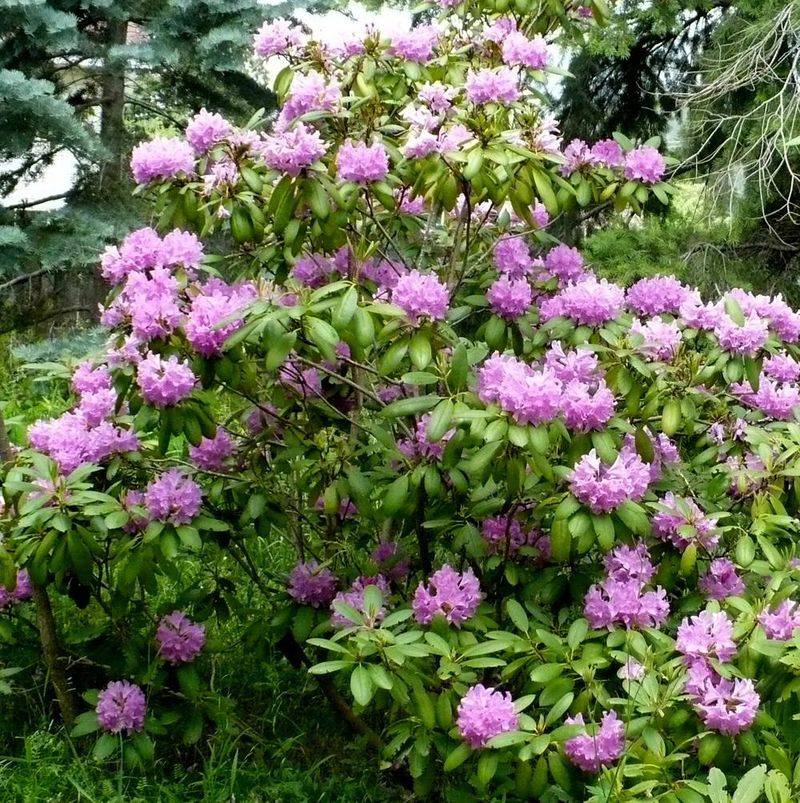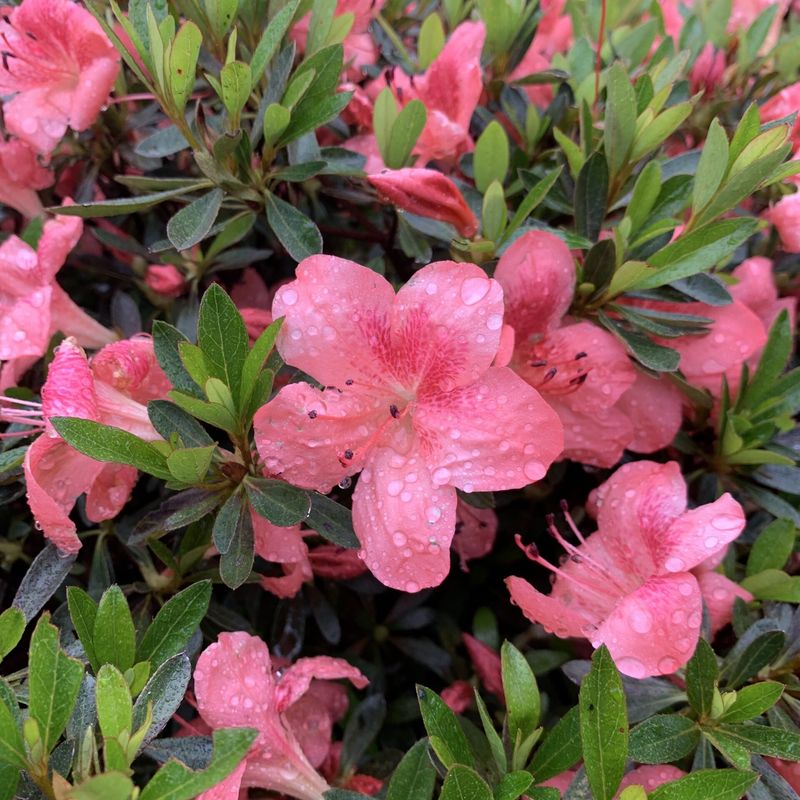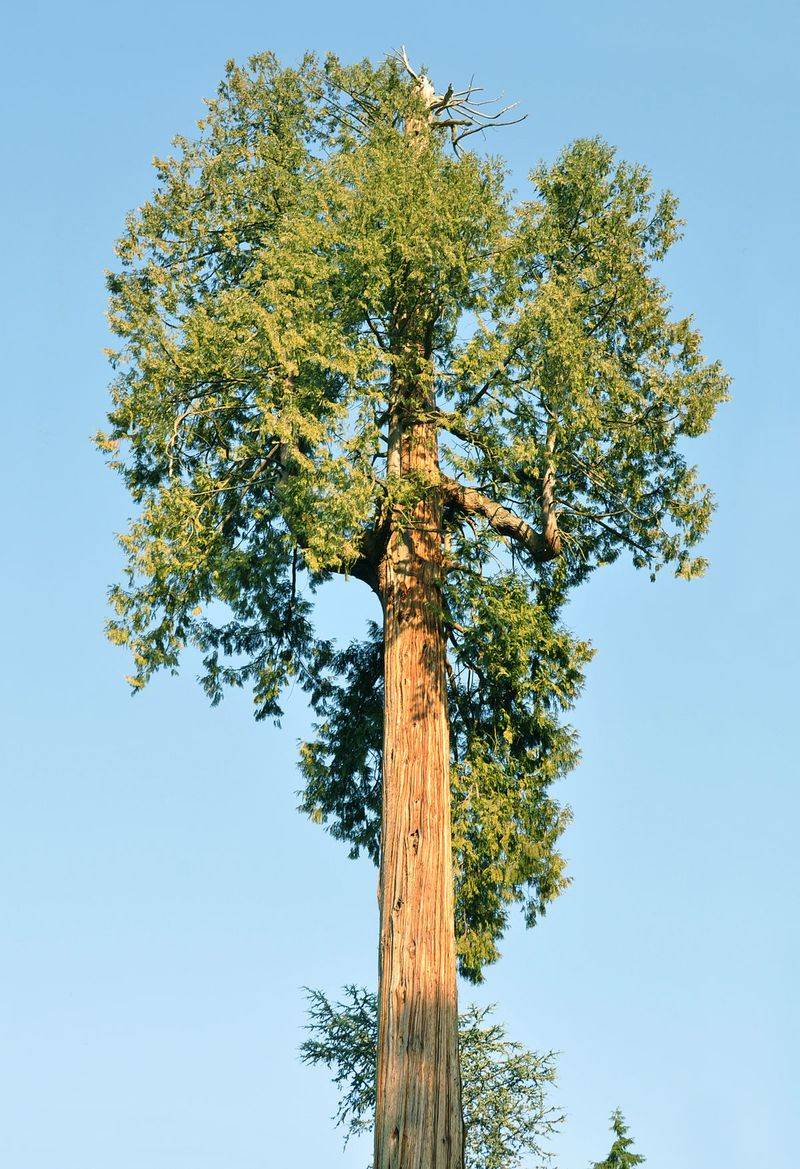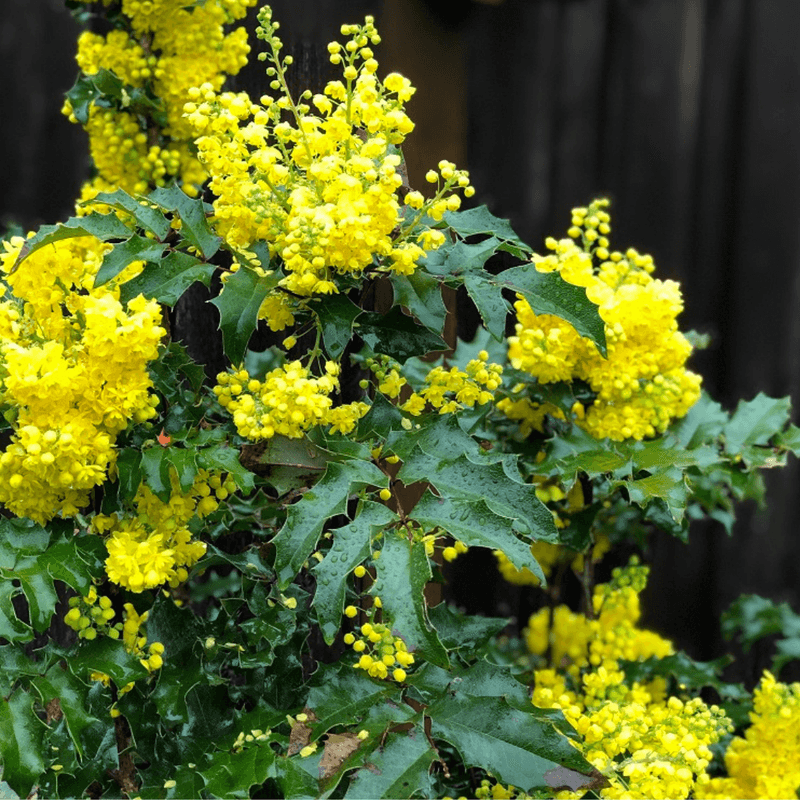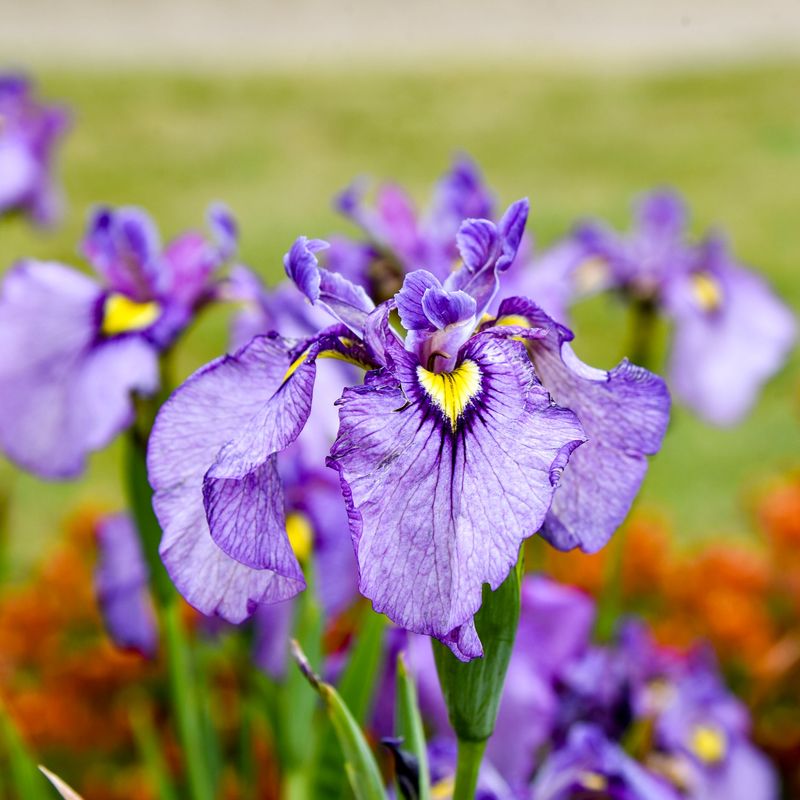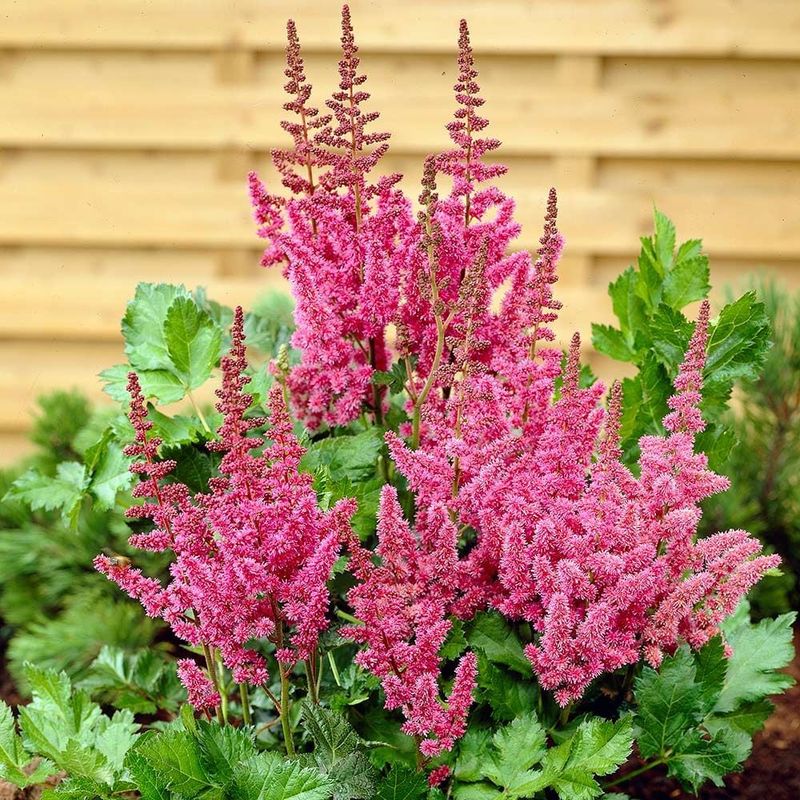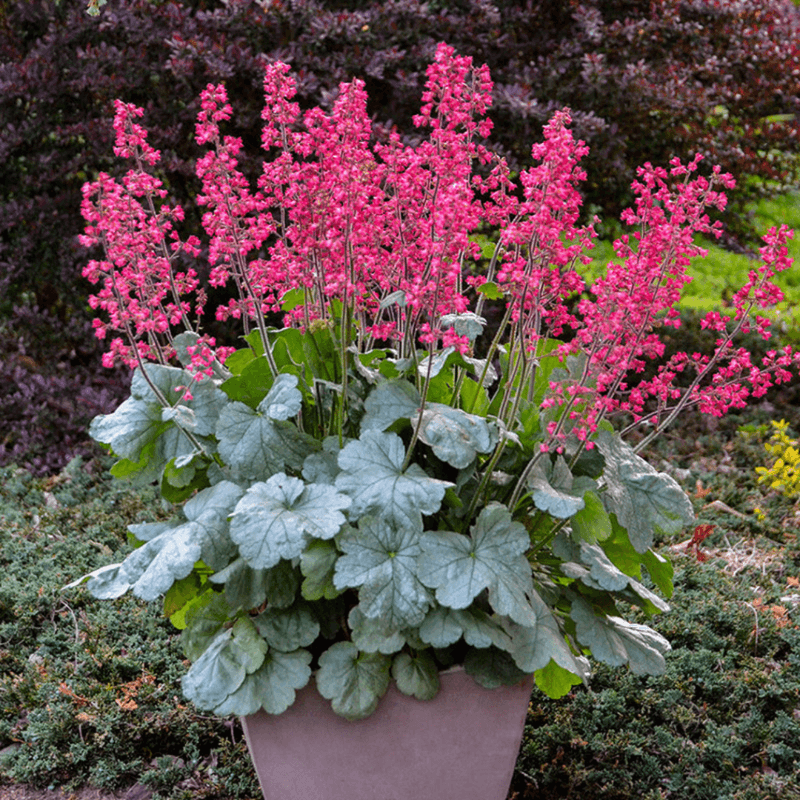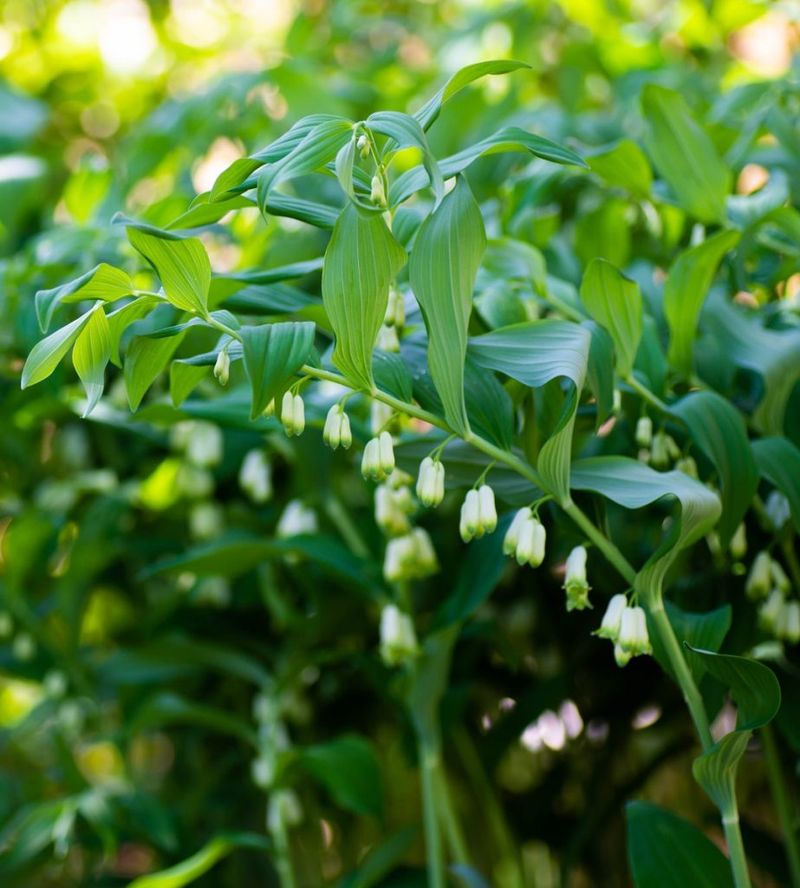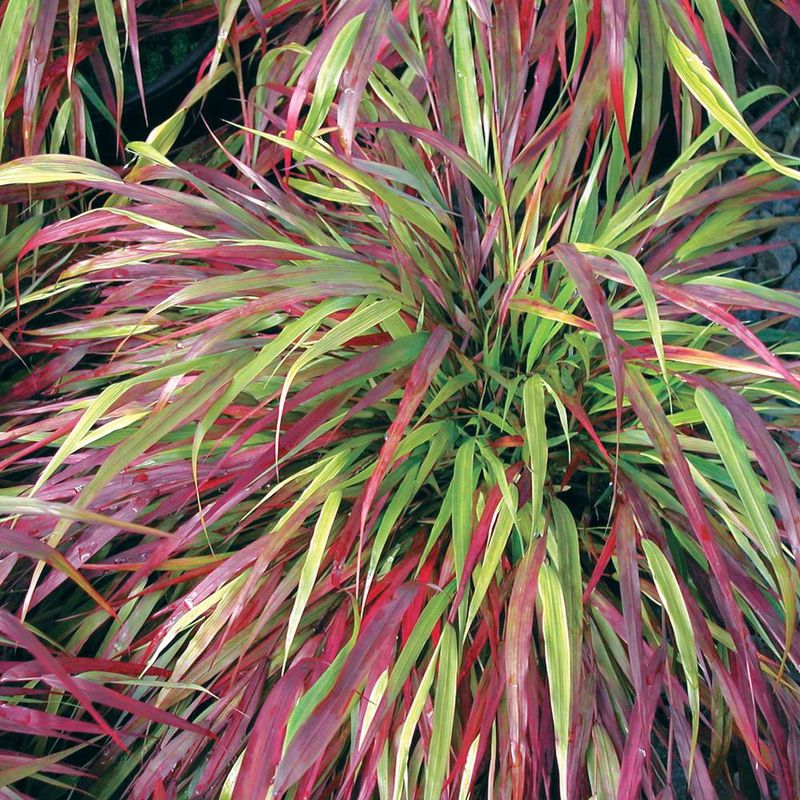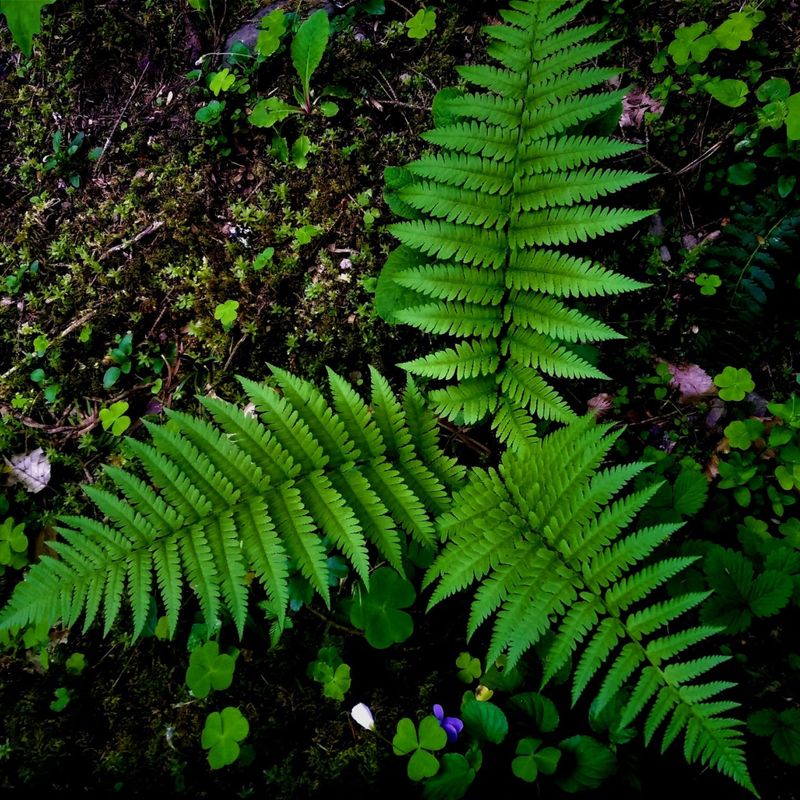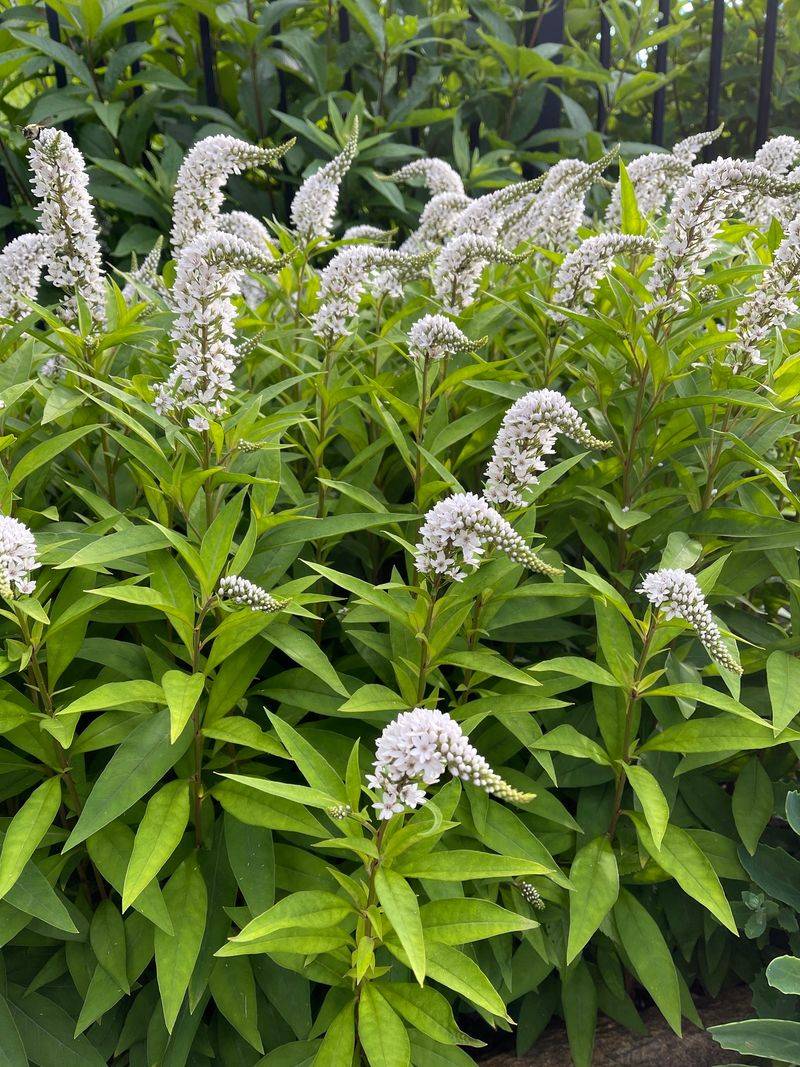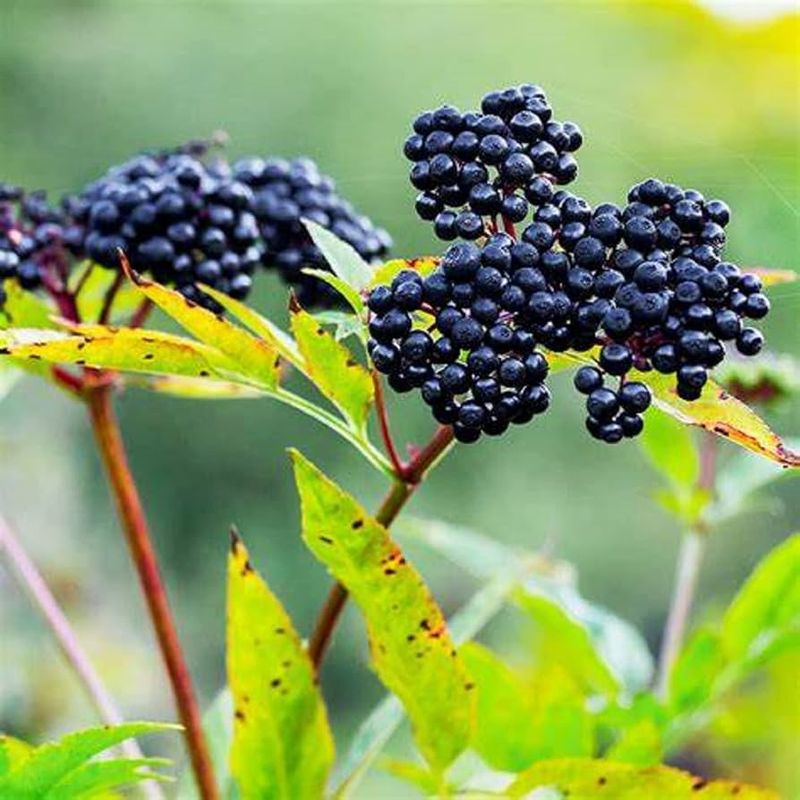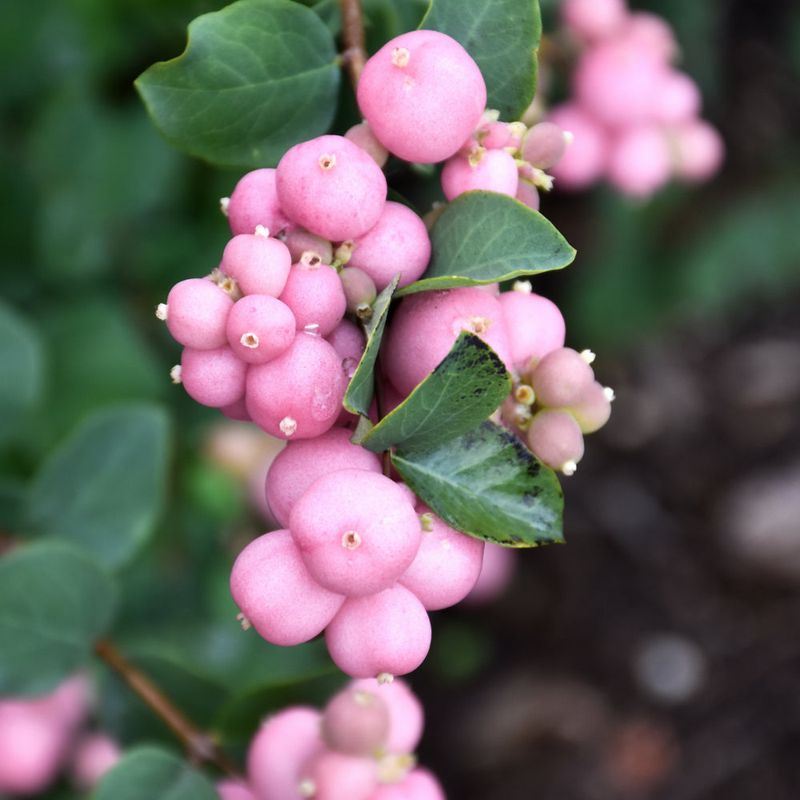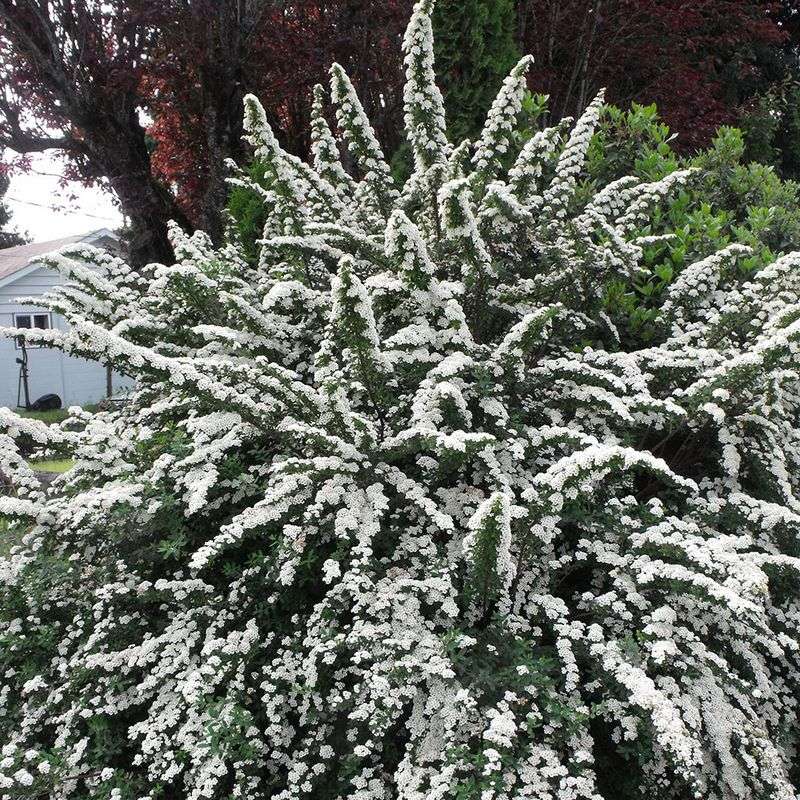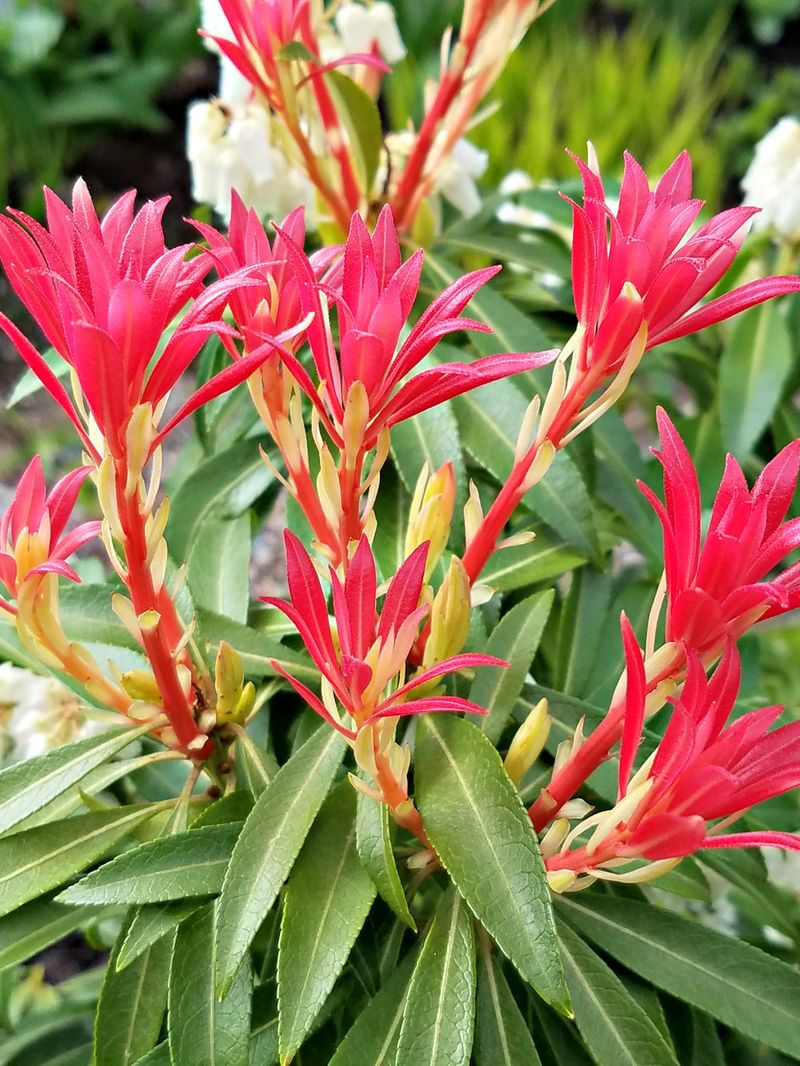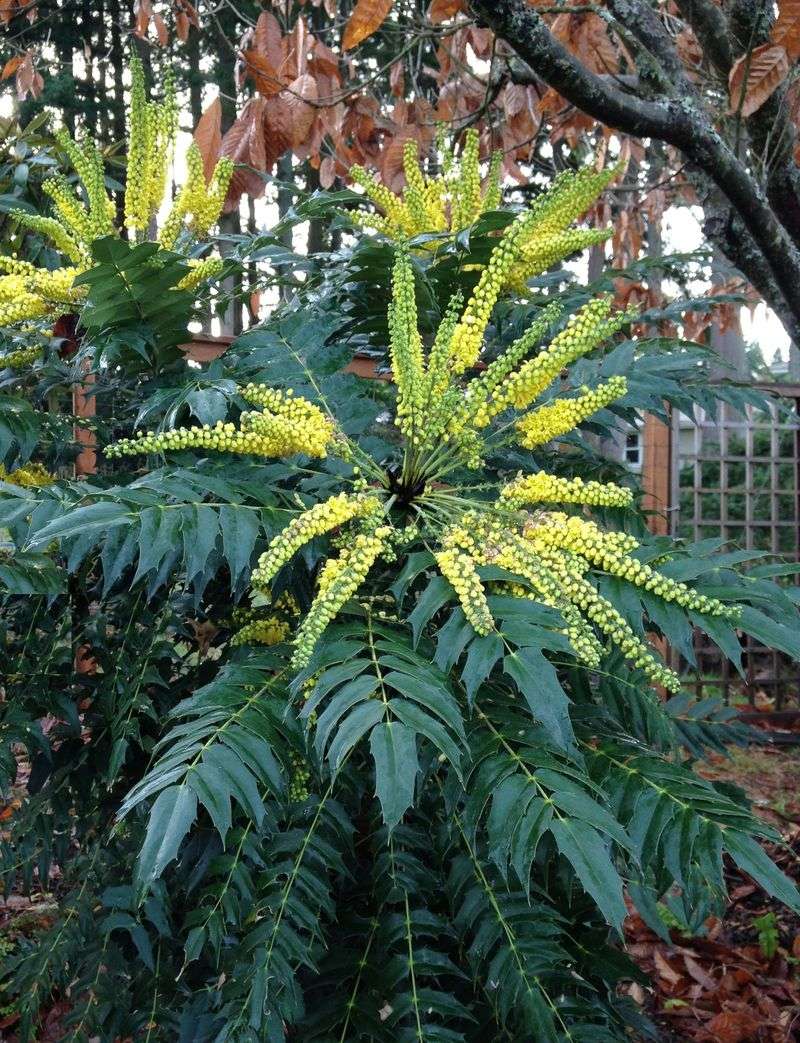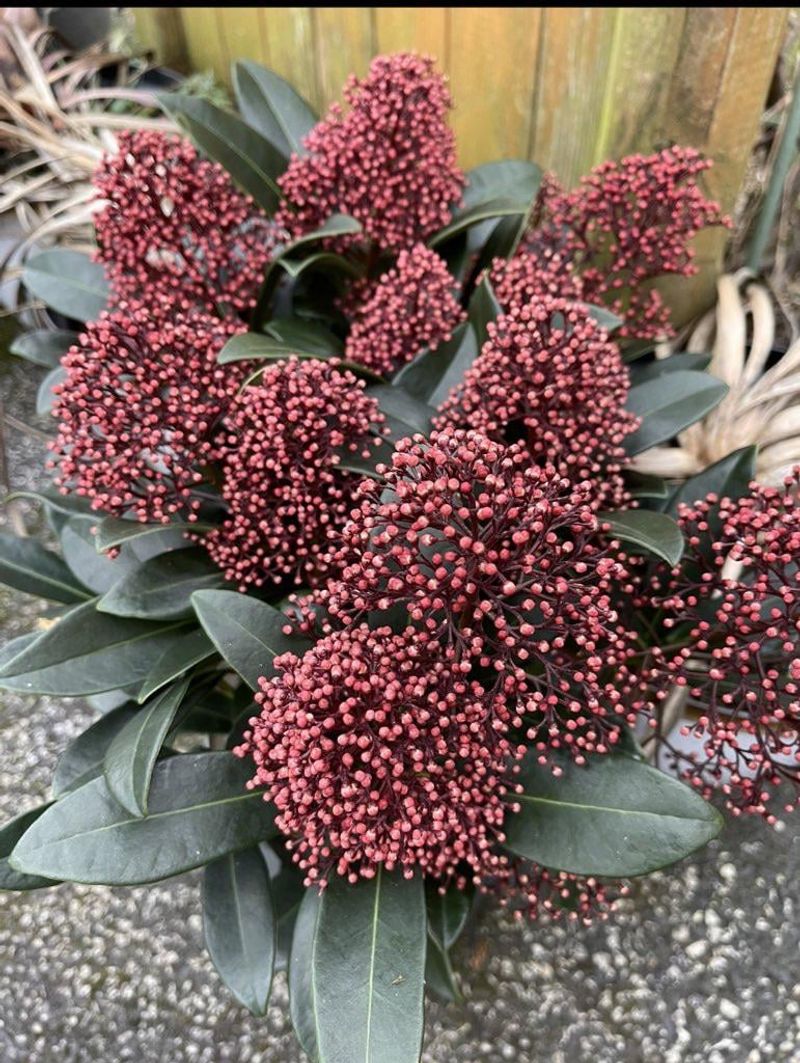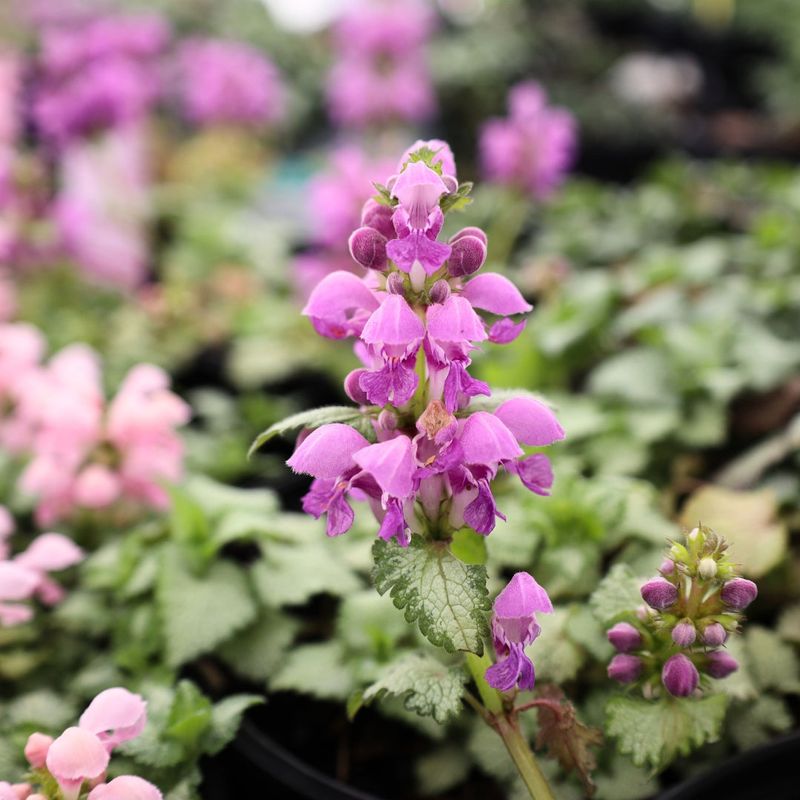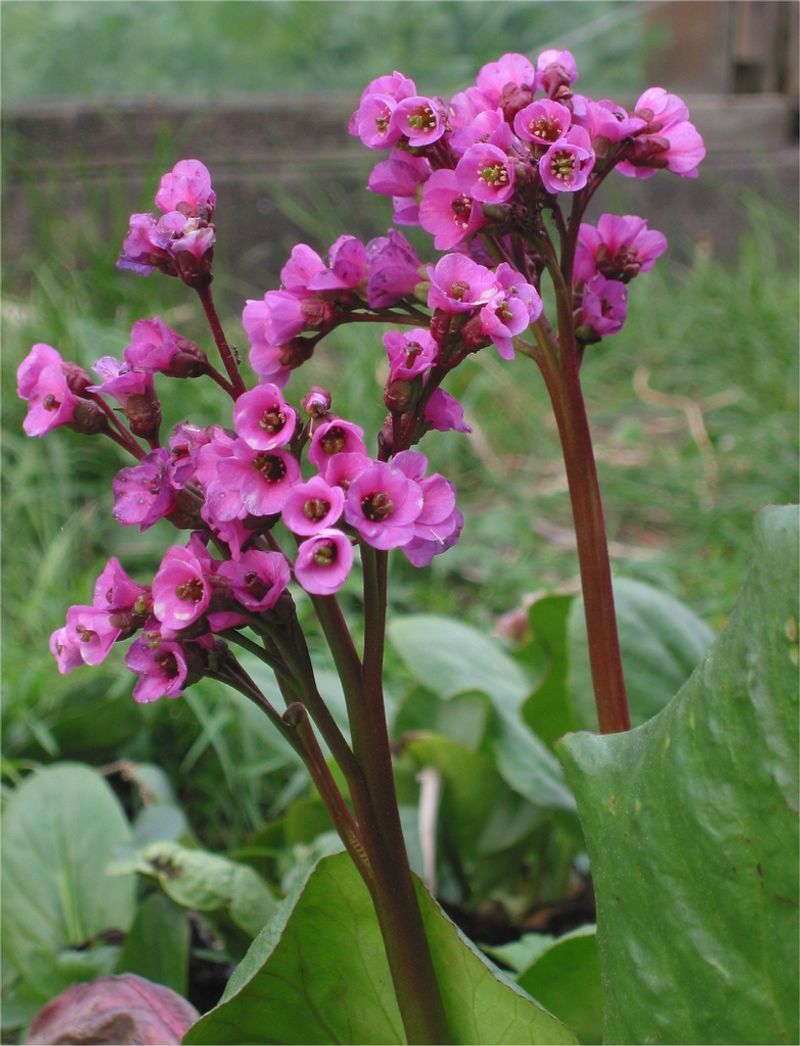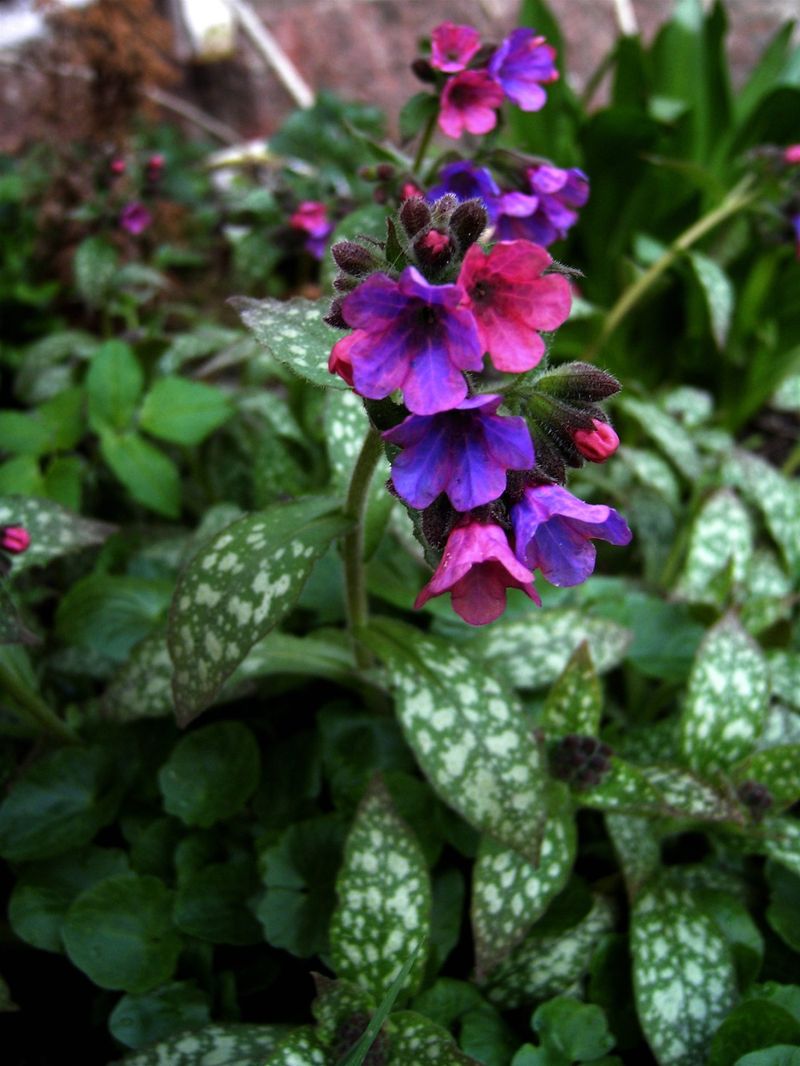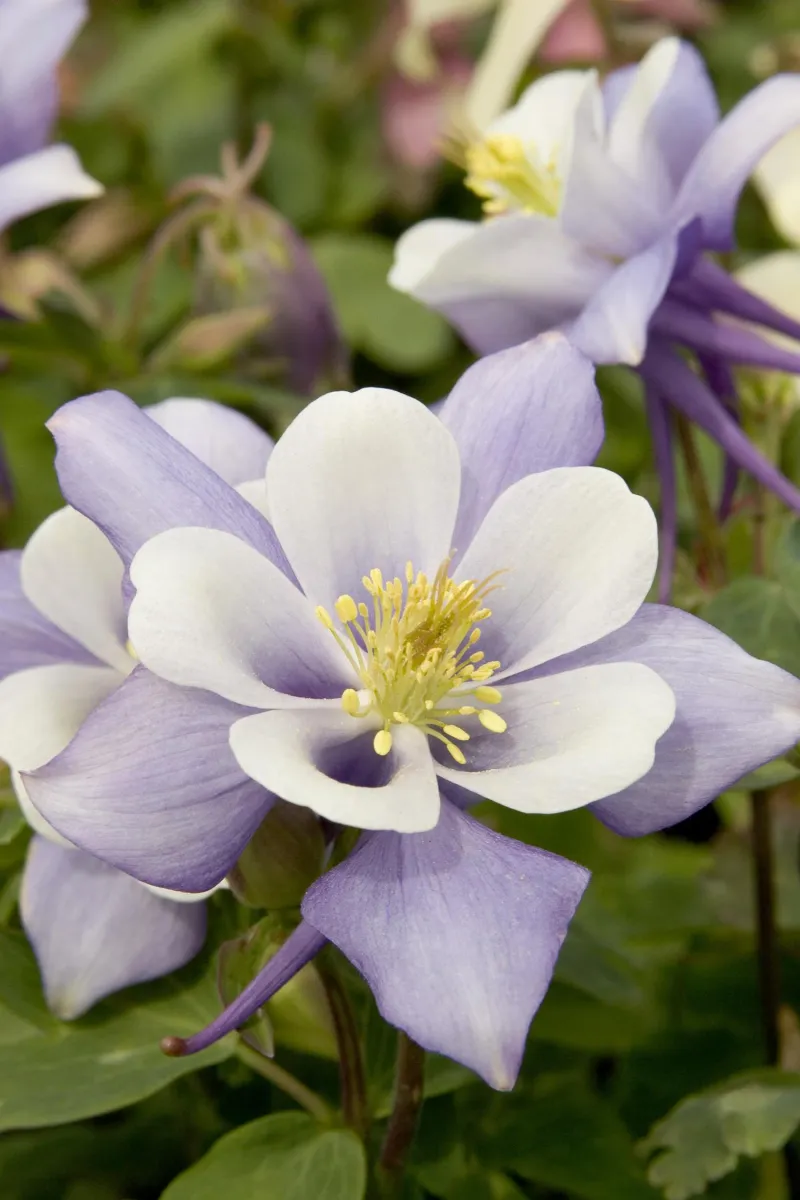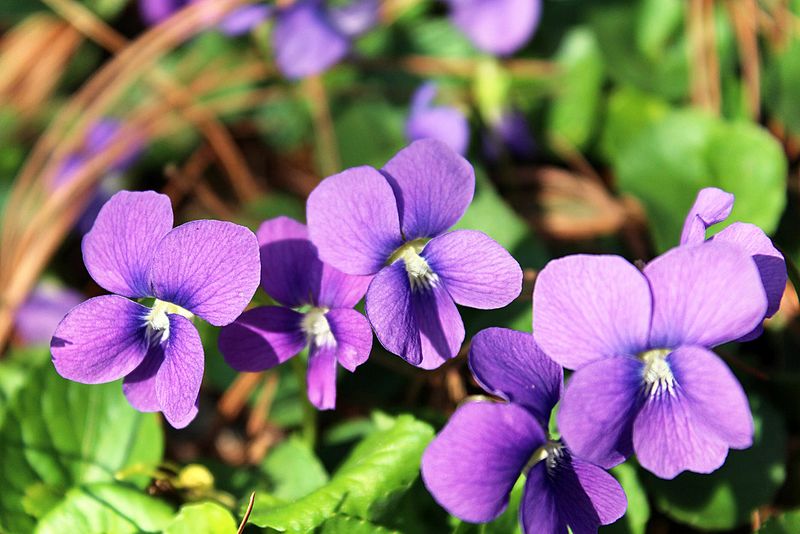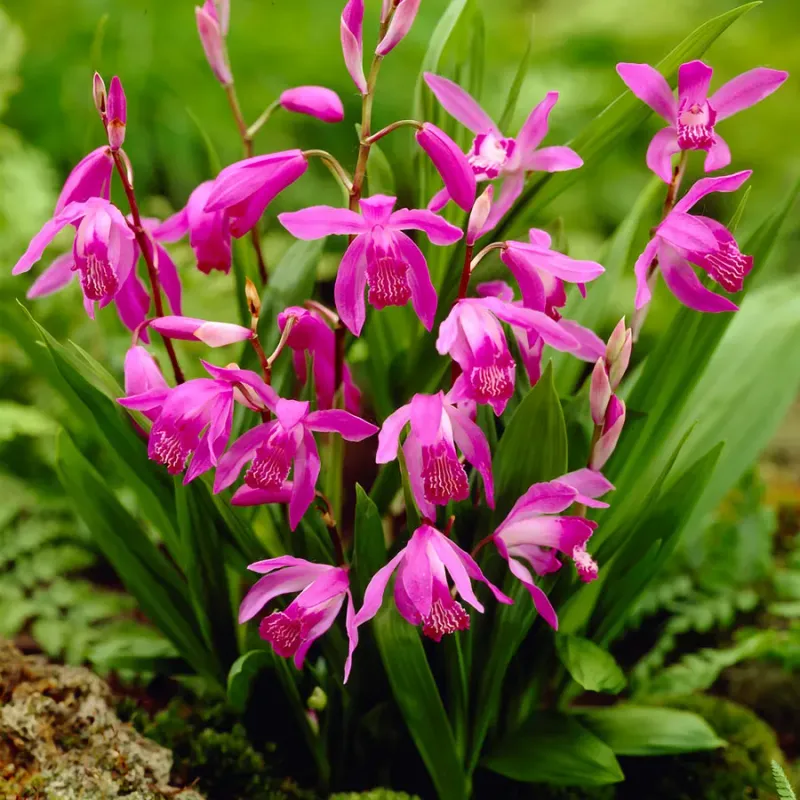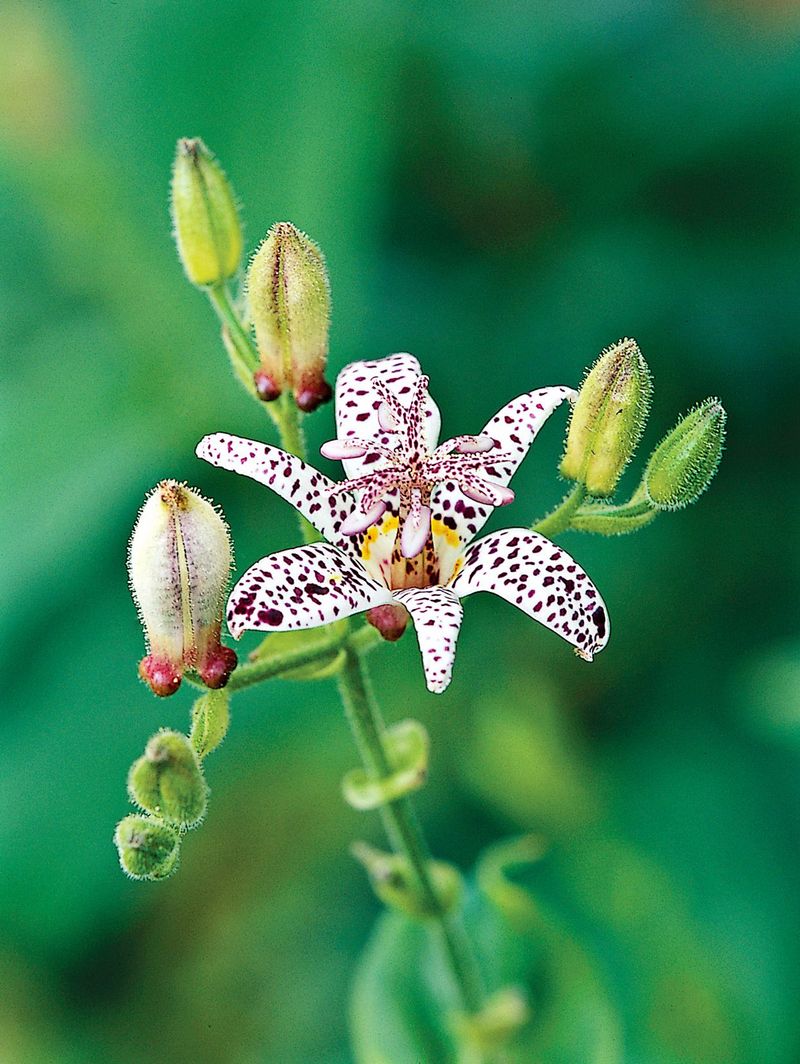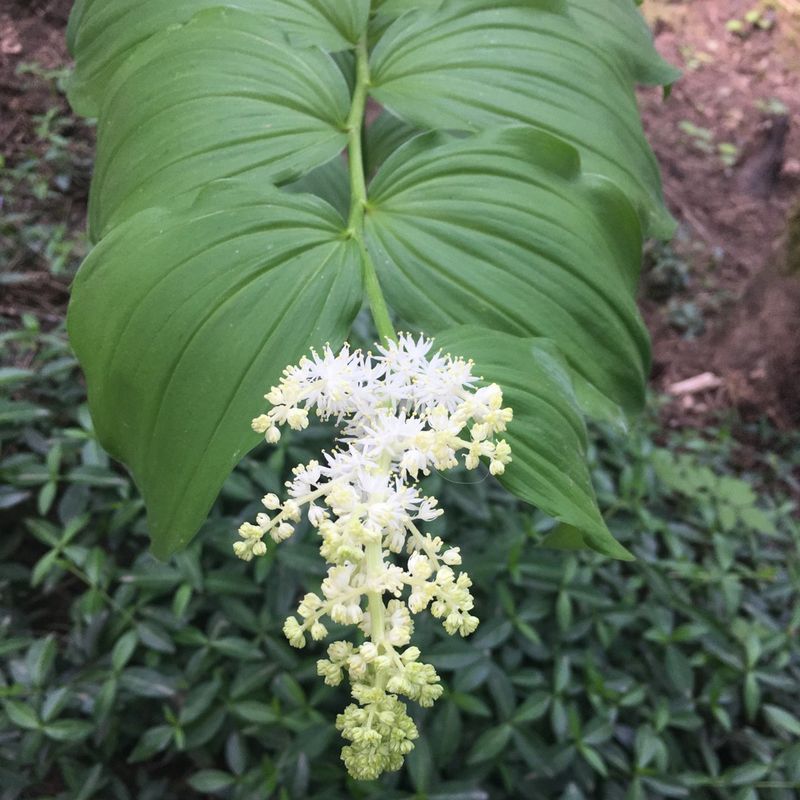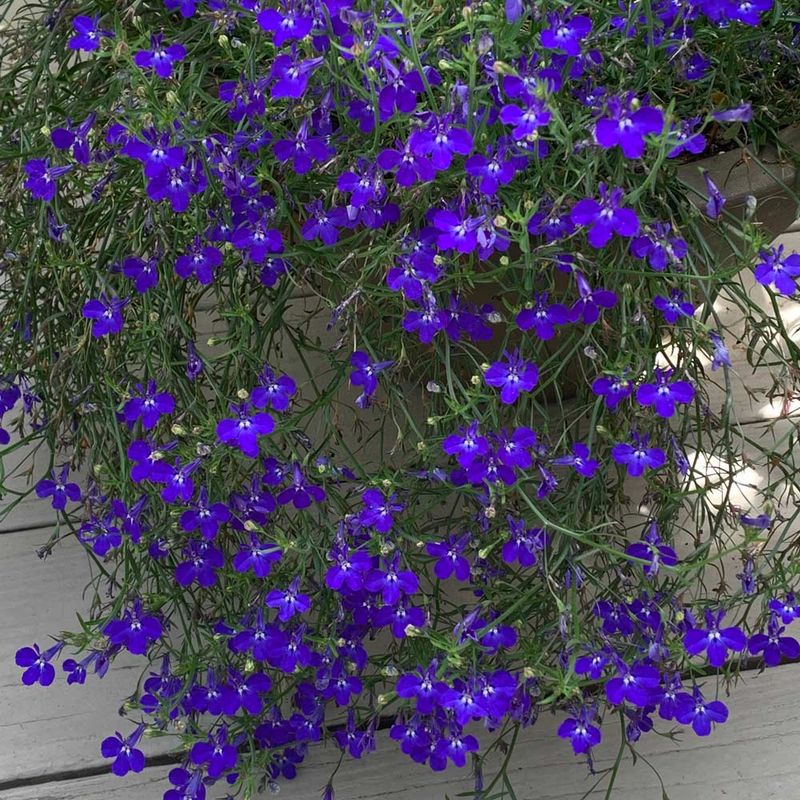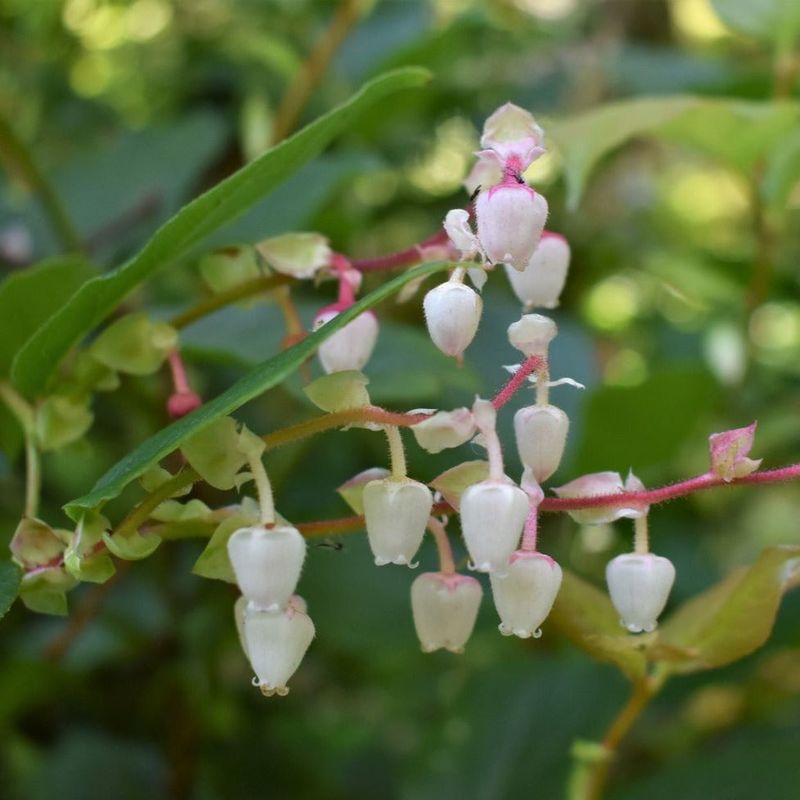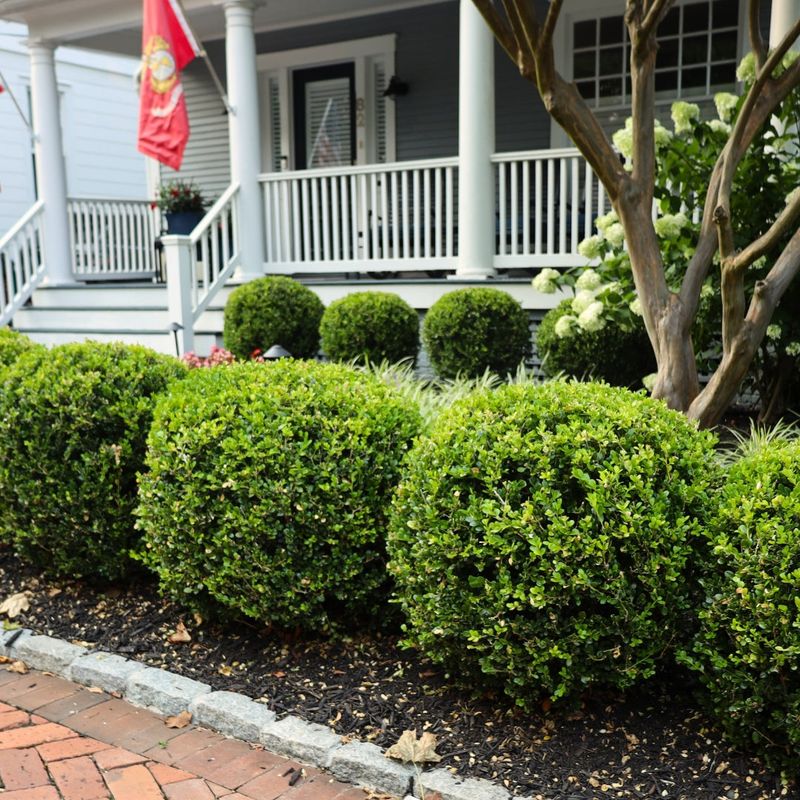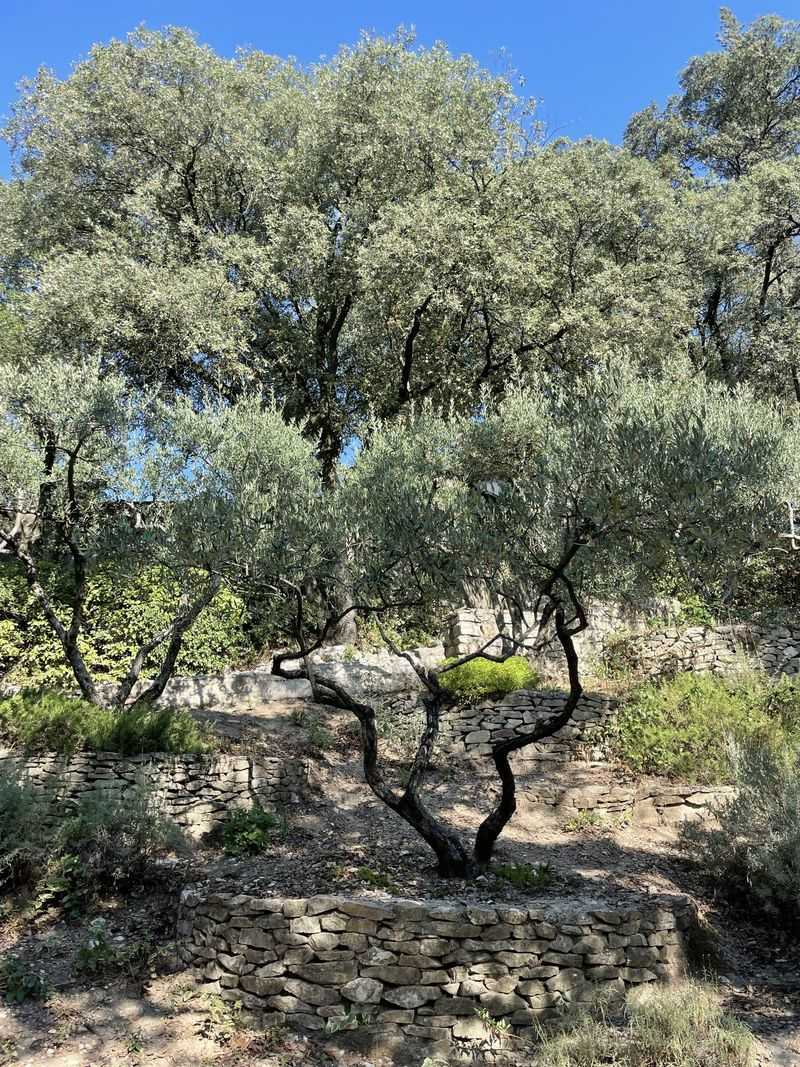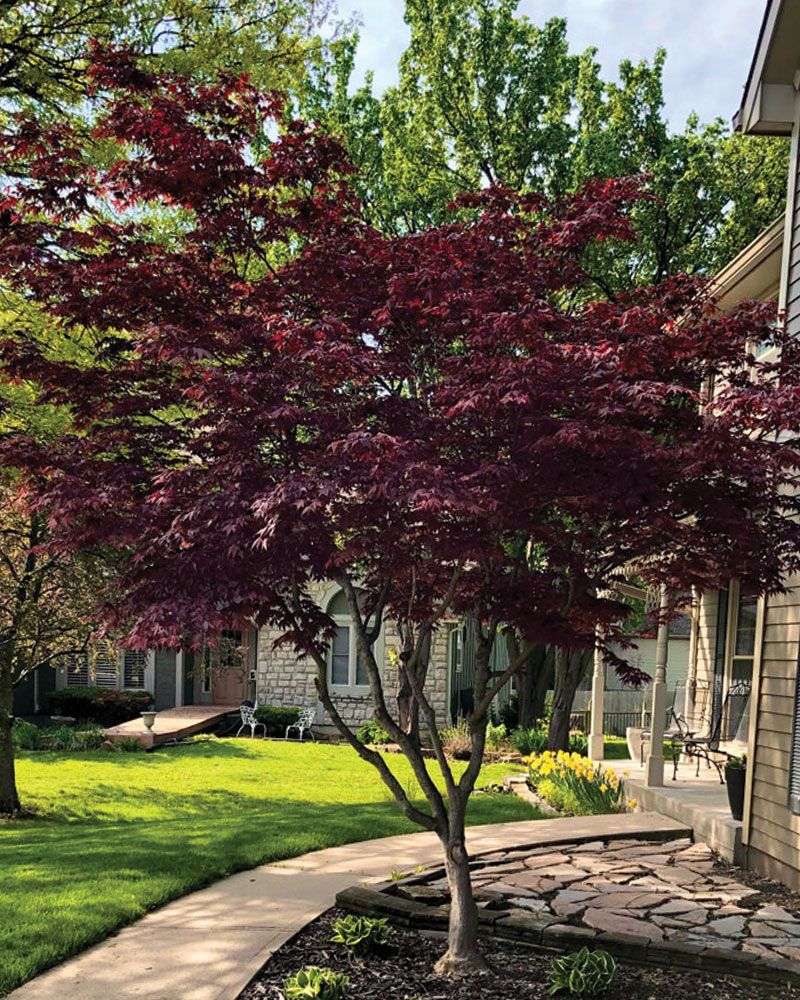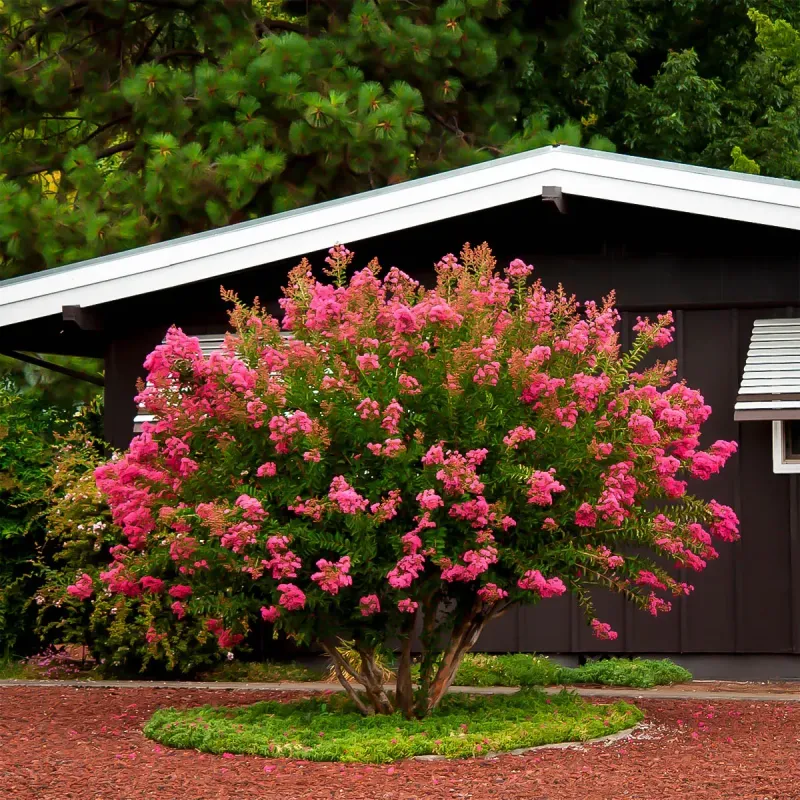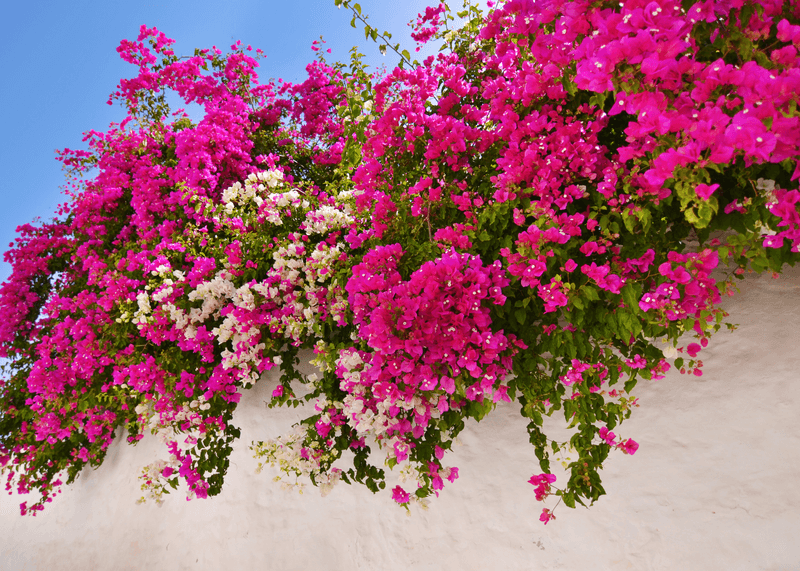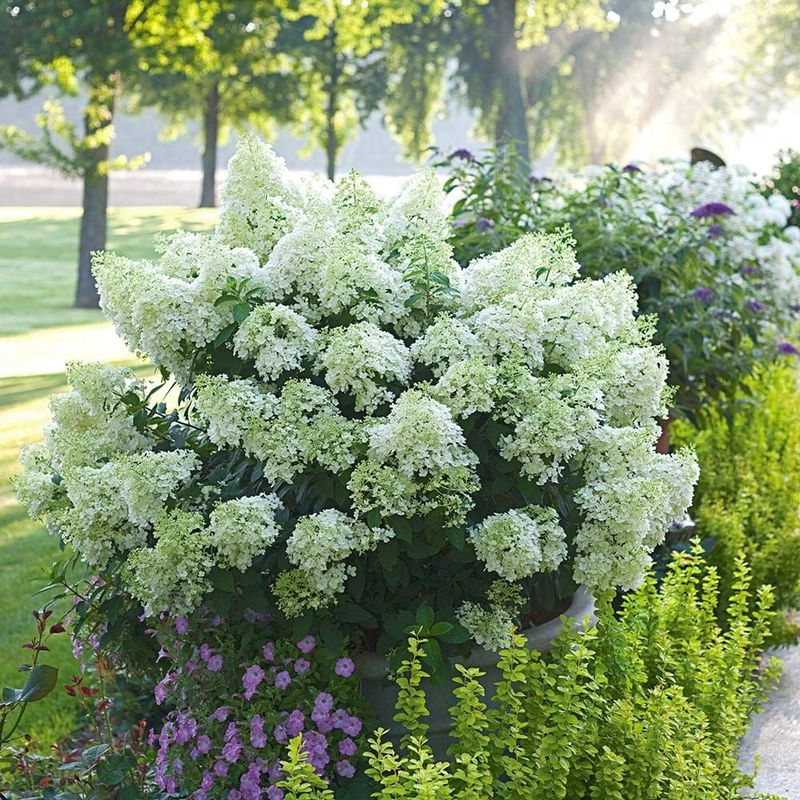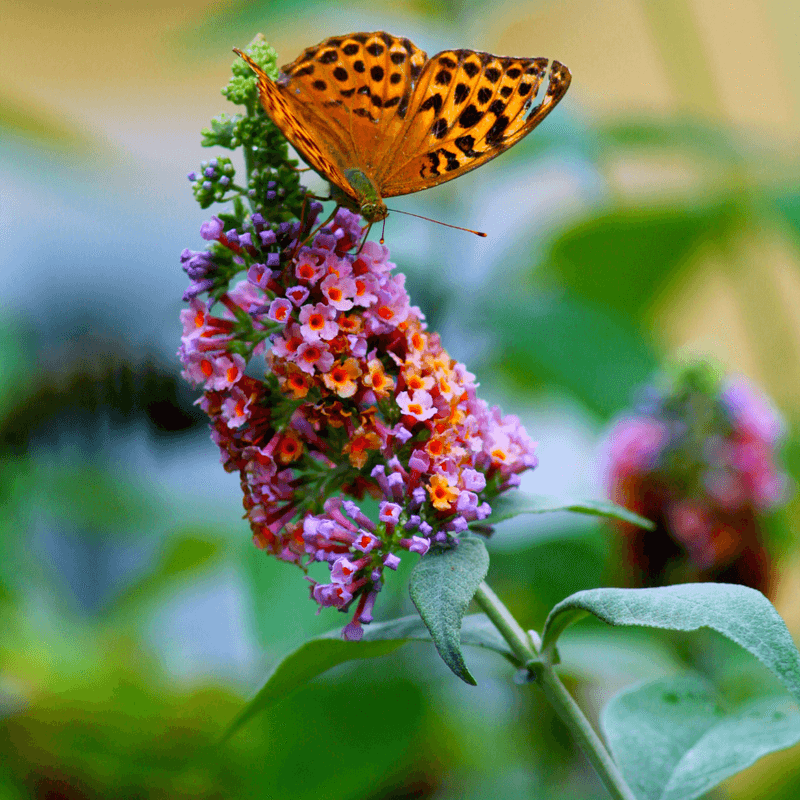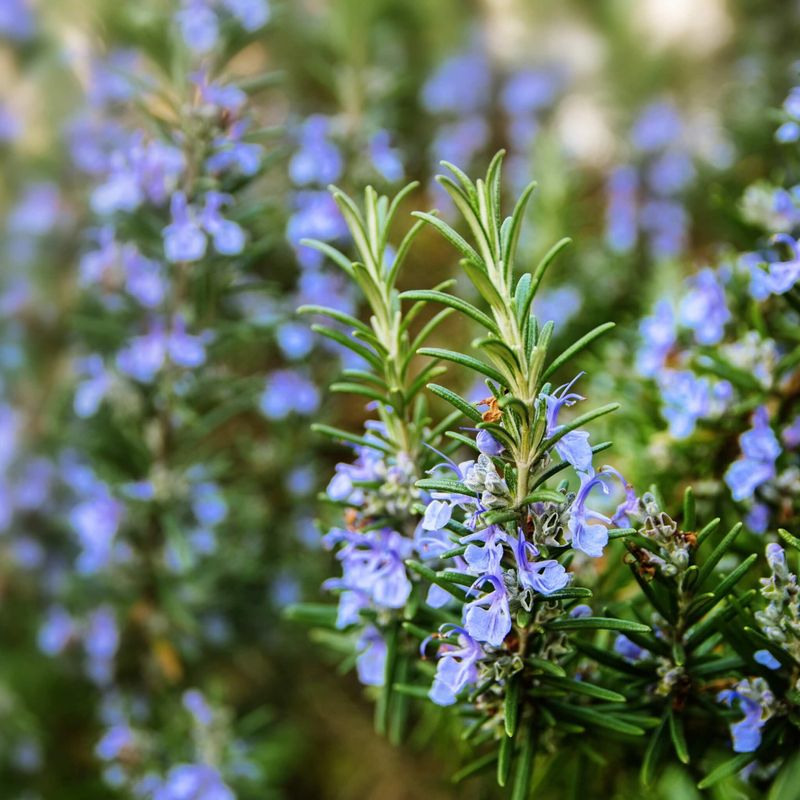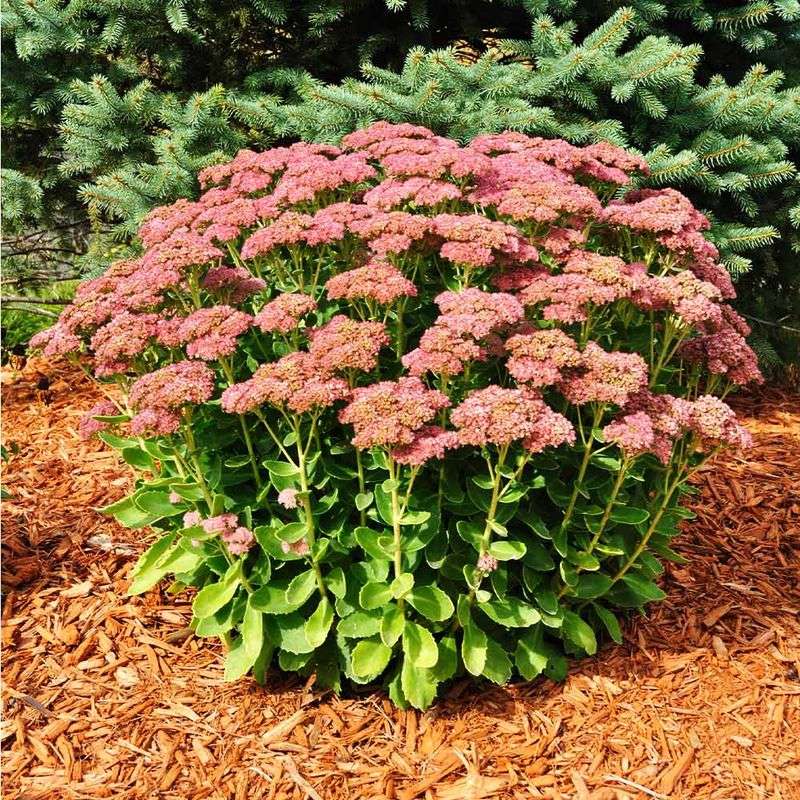Exploring shrubs and perennials in the Pacific Northwest feels like uncovering hidden gems in a treasure chest. I’ll admit, when I first moved here, I was completely baffled by the variety.
Who knew ferns could be so fancy? After a few mishaps (like planting my favorite lavender in the rainiest corner of the yard, RIP), I discovered the magic of PNW-friendly plants.
From rhododendrons to the resilient fuchsia, these shrubs and perennials not only thrive in the cool, wet winters but also bring life and color to every corner of your garden.
1. Rhododendron
The surprises in the garden start without warning. Rhododendrons are the ultimate PNW classic, offering evergreen leaves that ensure year-round interest.
Springtime brings an astonishing array of blooms in multiple colors. Rhododendrons prefer the cool, misty climate of the PNW, where their roots can stay moist but not overly saturated.
With minimal effort, they reward you with impressive floral displays. Not only are they beautiful, but they also provide shelter for birds. Just remember to give them acidic soil to keep them happy!
2. Azalea
Something about the color catches your eye. Azaleas, cousins to rhododendrons, bring splashes of color to any garden. They are versatile and can fit into small or large spaces.
They flourish in partial shade and require well-drained, acidic soil. These shrubs are excellent for creating borders or as standalone features.
Protect them from the harsh midday sun, and they will flourish. Their resilience to PNW weather makes them a gardener’s delight, plus they attract pollinators like bees and hummingbirds.
3. Western Red Cedar
Gardens need character and strength. The Western Red Cedar, with its towering presence, provides just that. Known for its aromatic wood, this tree offers shade and habitat for wildlife.
While it grows best in forests, it’s a cool addition to spacious gardens. It can withstand the rain-heavy winters typical of the PNW. Its foliage is dense, providing excellent windbreaks.
If you have space to spare, the Western Red Cedar adds timeless elegance to your garden, and its wood is a popular choice for outdoor furniture.
4. Oregon Grape
A hint of yellow peeks through the green. The Oregon Grape, a native to the PNW, is more than meets the eye. Its striking yellow flowers transform into edible blue berries.
This evergreen shrub thrives in both sun and shade and requires little maintenance. Its holly-like leaves add texture to garden beds. Notably, the berries can be used to make jelly.
Their adaptability and hardiness make Oregon Grape a top pick for gardeners looking for native plants that support local ecosystems.
5. Japanese Iris
The elegance is undeniable. Japanese Iris, with their striking petals, add a classy vibe to water features and garden edges. These perennials prefer moist, well-drained soil and plenty of sunlight.
Their colors shine in late spring, making them a standout choice for any garden. Japanese Iris are relatively low-maintenance and can be divided every few years to promote healthy growth.
They are ideal for gardeners who enjoy a pop of color and intricate floral design, and they complement aquatic plants beautifully.
6. Hosta
Sometimes, simplicity steals the show. Hosta plants, with their broad leaves, are a staple for shaded areas. Known for their foliage rather than their flowers, they bring texture and form.
Hostas thrive in the PNW’s moist conditions and can handle the occasional slug invasion. They come in many shapes, sizes, and shades of green and variegated patterns.
Perfect for borders, they offer personality to any garden space. Pair them with ferns for a cool, woodland feel that’s easy to maintain.
7. Astilbe
A gentle sway catches the breeze. Astilbe’s feathery blooms bring a playful charm to gardens. They love the damp, shady spots that PNW gardens provide.
With blooms that range from pink to white and red, they add a soft touch to garden borders or under trees. Astilbes are easy to care for, requiring little more than consistent moisture and occasional division.
They are a great choice for adding vertical interest and are particularly effective in mass plantings, creating a sea of color.
8. Bleeding Heart
Nature’s heartstrings are on display. The Bleeding Heart plant tantalizes with its unique, heart-shaped flowers that dangle from arching stems.
Perfect for shaded garden beds, they add character with little effort. This perennial thrives in the cool, moist conditions of the PNW and blooms in spring.
Despite their delicate appearance, Bleeding Hearts are surprisingly hardy. As a bonus, they are resistant to deer and rabbits, making them a friendly choice for wildlife-heavy gardens.
9. Coral Bells
Color isn’t just for flowers. Coral Bells charm with their foliage, offering colors from deep plum to fiery red. They prefer partial shade and well-drained soil.
Their small flower spikes add an extra dimension, blooming in late spring to early summer. These perennials are easy to maintain and work well in borders or as ground cover.
Their adaptability to different soil types makes them a versatile choice for PNW gardens. Not only do they look cool, but they also attract hummingbirds, adding life to any garden.
10. Solomon’s Seal
Elegance lies in the sweep of an arc. Solomon’s Seal offers a graceful presence with arching stems and dangling white flowers.
They thrive in shady, woodland settings and are perfect for adding height and structure. This perennial prefers moist, well-drained soil and can tolerate a variety of conditions.
They are an excellent choice for naturalizing areas under trees and are easy to care for, needing only occasional division. As a bonus, they are resistant to pests and diseases.
11. Japanese Forest Grass
It’s all about the movement. Japanese Forest Grass adds a flowing, soft texture to any garden. Its golden, arching blades make it a captivating ground cover, perfect for shaded areas.
This grass thrives in the damp, cool climate of the PNW and requires little maintenance. Ideal for borders or as an understory plant, it pairs beautifully with hostas and ferns.
Japanese Forest Grass is a great choice for creating a serene, textural landscape that sways gently in the breeze, adding a dynamic element to your garden.
12. Fuchsia
Dangling colors capture attention. Fuchsias are known for their intricate, pendulous blooms that come in shades of pink, purple, and red.
These plants prefer cool, moist conditions and thrive in containers or garden beds. Regular watering and shade are key to their success in the PNW.
Fuchsias provide continuous blooms from summer to fall, making them a high-impact choice for adding long-lasting color.
13. Ferns (e.g., Lady Fern)
Intricacy in every frond. Ferns, like the Lady Fern, are quintessential for creating a green backdrop. These plants thrive in the damp, shady conditions of the PNW, making them a garden staple.
Their delicate fronds add a soft texture, perfect for underplanting or filling in gaps. Ferns are incredibly low-maintenance and come in many varieties, each offering unique shapes and sizes.
Ideal for woodland gardens, they bring an ancient feel to modern landscapes. Plus, they pair well with other shade-loving plants like hostas and bleeding hearts.
14. Gooseneck Loosestrife
It’s quirky and it knows it. Gooseneck Loosestrife stands out with its distinct white flower spikes that resemble a goose’s neck.
This plant loves sunny spots and moist soil, thriving in PNW gardens. It’s an excellent choice for adding height and drama to borders or mass plantings.
Be aware, though, it can spread rapidly, so it might need some containment. Despite its invasive nature, its unusual shape and hardiness make it a fun addition to gardens.
15. Elderberry
Something sweet is brewing. Elderberry plants bring both beauty and utility, with clusters of white flowers followed by deep purple berries.
These shrubs thrive in the moist soils of the PNW and prefer sunny to partially shaded locations. Elderberries are not just ornamental. Their berries can be used in jams, wines, and herbal remedies.
Easy to grow and maintain, they also attract wildlife, providing food and shelter for birds. Their multifaceted benefits make them a top pick for gardeners who like to mix beauty with practicality.
16. Snowberry
A pop of white amidst the green. Snowberries offer a unique visual treat with their waxy, white berries that persist into winter.
These shrubs are native to the PNW and are incredibly hardy. They thrive in a variety of soil types and can tolerate shade or sun, making them versatile for landscaping.
Snowberries are excellent for erosion control and provide habitat for wildlife. Their berries, while not edible for humans, are a food source for birds.
17. Spirea
A splash of pink is always welcome. Spirea plants are known for their profuse blooms of small, pink flowers that cover the shrub in late spring and summer.
They thrive in full sun and well-drained soil, making them an excellent choice for PNW gardens. Spireas are easy to care for, needing only occasional pruning to maintain their shape.
Their dense foliage provides good coverage for garden borders, and their flowers attract pollinators like bees and butterflies. They are a low-maintenance option for gardeners seeking reliable color.
18. Pieris
New growth offers a fiery display. Pieris, also known as Lily of the Valley shrub, captivates with its red new leaves and white, bell-shaped flowers.
These shrubs thrive in the PNW’s acidic, well-drained soils and prefer partial shade. Pieris are evergreen, providing year-round interest with their changing foliage colors.
They are ideal for borders or as foundation plants, adding structure to garden designs. Their flowers and foliage provide a dynamic visual contrast, and they are generally pest-resistant.
19. Mahonia
A little bit of the exotic in a familiar setting. Mahonia adds an architectural element to gardens. This shrub thrives in shade and is highly adaptable to the PNW climate.
It blooms in winter, providing much-needed color during the dreariest months. Mahonia’s blue berries are edible and attract birds.
It’s a cool choice for gardeners looking to add year-round interest and wildlife support. As an added benefit, this shrub requires minimal maintenance while offering maximum impact.
20. Skimmia
Berries are not just for summer. Skimmia is known for its glossy green leaves and clusters of fragrant white flowers, followed by red berries.
This evergreen shrub thrives in the PNW’s acidic soils and prefers partial to full shade. Skimmia is an excellent choice for foundation planting or as a border shrub.
Its berries provide winter interest and food for birds. Skimmia is low-maintenance, requiring little more than occasional pruning to keep its shape.
21. Lamium
Ground cover doesn’t have to be boring. Lamium offers a delightful tapestry of variegated green and silver leaves, accented by purple flowers.
This plant thrives in the shaded, moist environments of the PNW. Ideal for filling in gaps between larger plants, Lamium is easy to care for and spreads quickly without being invasive.
Its leaves add texture, while the flowers provide seasonal interest. Lamium is a great choice for those seeking a hardy, attractive ground cover that can handle a variety of garden conditions.
22. Bergenia
Leaves as fancy as the blooms. Bergenia, also known as Elephant’s Ears for its large leaves, adds a robust texture to garden beds.
This plant thrives in both sun and partial shade and is tolerant of the PNW’s varied conditions. Bergenia flowers in early spring, offering clusters of pink blooms.
It’s a low-maintenance perennial, needing only occasional deadheading to encourage new growth. Bergenia is a great option for those looking to add both foliage and flower interest to their gardens.
23. Lungwort
Spots never looked so cool. Lungwort is a unique addition to shaded gardens. This plant is not only decorative but also hardy, thriving in the PNW’s moist, cool conditions.
Lungwort produces clusters of blue and pink flowers in early spring, adding a splash of color when few other plants are blooming.
It’s highly resistant to pests and diseases, making it a smart choice for low-maintenance gardens. Pair it with hostas and ferns for a rich tapestry of texture and color.
24. Columbine
A dance of petals in the breeze. Columbine flowers are known for their intricate, spurred petals that come in a wide range of colors.
These perennials thrive in the PNW, preferring sunny to partially shaded locations and well-drained soil. Columbines attract hummingbirds, adding life to your garden with their elegant blooms.
They are easy to grow and require minimal care, making them a favorite among gardeners. Their airy appearance and ability to self-seed make them a natural choice for gardens.
25. Violet
Tiny but mighty. Violets may be small, but they pack a punch with their charming blooms and heart-shaped leaves. These perennial ground covers thrive in the moist conditions typical of PNW woodlands.
Violets are excellent for naturalizing areas, spreading slowly without becoming invasive. Their early spring flowers offer a welcome burst of color before many other plants have woken up.
Violets are easy to grow and maintain, and their sweet fragrance makes them a delightful addition to woodland gardens.
26. Bletilla Orchid
Orchids aren’t just for the tropics. Bletilla Orchids bring an exotic flair to temperate gardens with their delicate pink and white blooms.
These hardy orchids prefer sunny to partially shaded spots and well-drained soil. They are surprisingly easy to grow, requiring minimal care once established.
Bletilla Orchids bloom in late spring, providing a dash of elegance and exoticism to garden borders. Their unique flowers and resilience to PNW conditions make them an intriguing choice for gardeners.
27. Toad Lily
Spots create intrigue. Toad Lilies are the cool kids of the garden, with their orchid-like flowers that bloom in late summer.
They thrive in the shade and moist environments of the PNW, making them a unique fall-blooming choice. Toad Lilies are easy to grow and require little more than regular watering to keep them happy.
Their exotic appearance adds something unusual to garden beds, making them a conversation starter. Plant them in shaded areas where their intriguing blooms can be admired up close.
28. False Solomon’s Seal
It’s all in the arrangement. False Solomon’s Seal won me over with its arching stems and clusters of white flowers. This perennial thrives in shady, woodland conditions typical of the PNW.
Unlike its namesake, the flowers appear in clusters at the stem ends, adding a unique twist. False Solomon’s Seal is easy to grow and maintain, providing interest from spring through summer.
Its berries, which turn red in fall, add seasonal color. It’s a smart choice for naturalizing wooded areas, offering both structure and beauty.
29. Lobelia
Blue as the sky above. Lobelia brings a splash of blue to garden beds, making it a popular choice for gardeners.
These annuals and perennials thrive in sunny spots with well-drained soil and are perfect for borders or containers. Lobelias are known for their long blooming season, lasting from summer into fall.
They are easy to grow and maintain, requiring little more than regular watering. Their striking color and ease of care make them a top pick for adding cool tones to any garden setting.
30. Salal
Salal is a versatile evergreen shrub that thrives in the PNW’s mild climate. Known for its leathery leaves and small white flowers, it adds texture and depth to any garden setting.
This plant is incredibly resilient, tolerating a range of soil conditions from sandy to clay. It is an excellent ground cover option, suppressing weeds while maintaining moisture in the soil.
Gardeners appreciate salal not only for its aesthetic qualities but also for its edible berries, which attract wildlife and can be used in various culinary applications.
31. Boxwood
Sometimes, tradition takes a hit. Boxwood shrubs, while classic, struggle in the PNW due to the region’s wet winters.
Their dense, evergreen foliage is prone to disease in damp conditions, making them a challenging choice for local gardens.
Though they offer formal structure and are great for hedges, the maintenance required can outweigh their appeal. Keeping them healthy demands regular pruning and monitoring for blight.
32. Lavender
Scented beauty meets climatic obstacle. Lavender is beloved worldwide, yet struggles in the wet PNW climate.
These plants prefer dry, well-drained soil and full sun, conditions that are a rare find in the region. Lavender’s susceptibility to root rot in rainy winters makes it a high-maintenance choice.
While they can be grown in containers for better drainage, they often don’t reach their full potential.
33. Olive Trees
Mediterranean dreams meet PNW reality. Olive trees evoke visions of sun-drenched landscapes. Unfortunately, the PNW’s wet and cool conditions pose significant challenges.
Olive trees require hot, dry summers and well-drained soil to prosper, making them an awkward fit for the region.
For gardeners dreaming of harvesting olives, consider this: the maintenance may outweigh the rewards in this climate.
34. Japanese Maple
Sometimes, it’s the soil beneath that decides compatibility. Japanese Maples are often coveted. However, they can be finicky in the PNW, requiring well-drained soil and protection from harsh winds.
Their shallow roots make them prone to stress in poor conditions. While they add undeniable beauty to gardens, they may need extra care and attention.
For those willing to invest the time, Japanese Maples can be a beautiful focal point, though not without demands.
35. Crape Myrtle
Southern charm meets northern challenge. Crape Myrtles face difficulties in the PNW climate. They flourish in hot, sunny conditions, preferring well-drained soil.
However, the region’s cooler summers and wet winters do not align with their needs, often limiting their growth and flowering potential.
While they can add a touch of southern elegance to gardens, the maintenance and care needed to keep them happy can be a deterrent. For those committed, container planting is an option.
36. Bougainvillea
Brilliant colors meet climatic constraints. Bougainvillea is a showstopper in any garden. It prefers dry, sunny conditions, making the PNW’s wet winters a tough match.
Bougainvillea requires excellent drainage and protection from cold, often necessitating container growth to survive.
Its high maintenance needs can deter gardeners, as it requires regular pruning and careful site selection.
37. Hydrangea (Paniculata)
Sometimes, it’s the style that sets expectations. Hydrangea Paniculata is striking but demands attention in PNW gardens.
Unlike other hydrangeas, it prefers full sun to part shade and well-drained soil. The region’s wet winters can cause root issues, making it a less reliable choice.
While it does provide lovely blooms, the care required might outweigh the rewards. Consider other hydrangea varieties that are better suited to the PNW climate for a lush garden with less fuss.
38. Butterfly Bush
Pollinators aren’t the only fans, but problems persist. Butterfly Bushes attract butterflies with their flower spikes, yet they’re invasive in PNW gardens.
These shrubs grow rapidly and can outcompete native plants, disrupting local ecosystems. While they offer colorful displays, their aggressive nature requires diligent management.
For those committed to supporting pollinators, consider native alternatives that offer similar benefits without the ecological risks.
39. Rosemary
Aromatic allure meets tricky terrain. Rosemary is a culinary favorite. However, it struggles in the PNW’s wet climate, where its roots can rot in damp soil.
These evergreen shrubs thrive in hot, sunny conditions with excellent drainage. While they can be grown successfully in containers, allowing for better soil control, they often require more care than other herbs.
For gardeners seeking low-maintenance options, alternatives better suited to the region might offer similar culinary uses with less effort.
40. Sedum
Sometimes, adaptability meets its match. Sedums are typically easy to grow. However, the PNW’s wet winters can challenge their survival.
These plants prefer sunny, dry spots with excellent drainage, which can be difficult to find. While Sedums are hardy and low-maintenance in the right conditions, they may not thrive in poorly drained soils.
For those with the right microclimate or a well-drained rock garden, Sedums can be a cool addition, but they require careful site selection.


